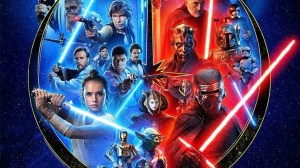Mark Millar is a writer whose work has made huge inroads outside of the comic book market, and whose success has helped Image Comics and the creator-owned comics movement hugely in the last 20 years. The onetime Superman and Civil War writer has knocked out adaptation-friendly hits like Kick-Ass, Wanted, and The Secret Service (also known as Kingsman) over the years, and he currently has a huge creator-owned event series going on that serves as a sequel to Wanted to boot. Still, in a series of recent interviews, Millar has called out the current comics industry for not doing enough to bring in new readers.
Videos by ComicBook.com
Listening to him talk, the market sounds pretty dire. He talks about comics retailers who are struggling to keep their heads above water and claims there are only a couple of good books at Marvel or DC at one time — no longer enough to force the audience to make hard choices with their dollars, barely even enough to motivate people in through the comic shop doors. And his prognosis for creator-owned books isn’t much better.
“In reality, in the last ten years, there hasn’t been any big, blow-up success in the creator-owned world,” Millar said. “Saga was probably the last one that went crazy. Things have done well, done nicely, but Saga was the last time that there was a phenomenon, and The Walking Dead prior to that. There’s been a few, but the real success comes form the industry– I’m not talking about as individuals, as creators….The honest truth is that creator-owned growth comes from Marvel and DC doing well.”
It’s been more than a decade since Saga dropped, and Image’s 20th anniversary faded into its 30th in that time. If Saga was the last mega-hit they had, that would be a pretty terrifying thing. But our friends over at Bleeding Cool have done a pretty sharp breakdown of some actual numbers that tell a bit of a different story. Maybe not quite as different as it first appears at face value, but certainly not as cut and dried as Millar presents it.
We’ll start out with a list — provided by Image, vetted by Bleeding Cool’s Rich Johnston in a piece that’s both excellent and promises more like it to come soon. It makes sense it would come from Johnston, who for years had his own in-house bestseller list and seems more interested than almost anyone else covering comics in trying to figure out the real numbers that underpin the direct market. The list in question — seen just below — is Image’s in-house list of the 25 best-selling launch titles (#1 issues) since 2012:
1. KING SPAWN (Todd McFarlane Productions) 2021
2. GUNSLINGER SPAWN (Todd McFarlane Productions) 2021
3. SCORCHED (Todd McFarlane Productions) 2021
4. SPAWN’S UNIVERSE (Todd McFarlane Productions) 2021
5. CROSSOVER (Donny Cates/Geoff Shaw) 2020
6. TWIG (Skottie Young/Kyle Strahm) 2022
7. JUPITER’S LEGACY (Mark Millar/Netflix) 2013
8. NOCTERRA (Scott Snyder/Tony S Daniel) 2021
9. STRAY DOGS: DOG DAYS (Tony Fleecs/Trish Forstner) 2021
10. MOM: MOTHER OF MADNESS (Emilia Clarke/Marguerite Bennett/Leila Leiz) 2021
11. VANISH (Donny Cates/Ryan Stegman) 2022
12. VOID RIVALS (Robert Kirkman/Skybound) 2023
13. THE WALKING DEAD DELUXE (Robert Kirkman/Skybound) 2020
14. DEPARTMENT OF TRUTH (James Tynion IV/Martin Simmonds) 2020
15. W0RLDTR33 (James Tynion IV/Fernando Blanco) 2023
16. SKYBOUND X (Robert Kirkman/Skybound) 2021
17. PRIMORDIAL (Jeff Lemire/Andrea Sorrentino) 2021
18. OUTCAST (Robert Kirkman/Skybound) 2014
19. UNDISCOVERED COUNTRY (Scott Snyder / Charles Soule/ Giuseppe Camuncoli) 2019
20. GEIGER (Geoff Johns/Gary Frank) 2021
21. WHATS THE FURTHEST PLACE FROM HERE (Matt Rosenberg/Tyler Boss) 2021
22. WYTCHES (Scott Snyder/Jock) 2014
23. REBORN (Mark Millar/Netflix) 2016
24. OBLIVION SONG (Robert Kirkman/Skybound) 2018
25. WE STAND ON GUARD (Brian K. Vaughan/Steve Skroce ) 2015
The absence of Saga — or of 2012 books like The Manhattan Projects and Fatale — are missing from the list entirely. What the list does seem to underscore, more than an existential crisis at Image Comics, is the growing comics market. Costs are soaring, leaving retailers feeling lean, but gut feelings aren’t numbers, and actual sales in dollars have been consistently trending upwards in comics for a number of years now. So, it makes sense that so many of these best-sellers — all of which reportedly sold 80,000 copies or more, with the top third up over 100,000 (some as high as 500,000, which even by Marvel and DC standards is astronomical) — have come out in the last few years.
That also ignores huge numbers being put up by books at Dark Horse, Boom!, and other smaller publishers who catch lightning in a bottle with books like Somebody is Killing the Children, Minor Threats, or BRZRKR.
It’s worth noting that almost everyone on this list — Todd McFarlane, Mark Millar, Donny Cates, Scott Snyder — started with big hits at Marvel and DC before becoming creator-owned successes, which speaks to Millar’s thesis. At the same time, creators like Jeff Lemire and Robert Kirkman have really only flirted with Big Two comics in a big way. Yes, Marvel Zombies was a success, but Kirkman had already been playing in the creator-owned sandbox by then, and if not for the runaway success of The Walking Dead, it’s likely most people would have forgotten Zombies by now. Tony Fleecs worked on My Little Pony and some other corporate comics at IDW, but didn’t have to pay any dues at the Big Two to land Stray Dogs on the best-seller list. James Tynion IV, who does Something Is Killing the Children and BRZRKR, may have started his career as one of the thirty guys writing a monthly Batman book, but his creator owned stuff outshines and outsells that now.
Where Millar may have a point is in the idea of Saga becoming a “phenomenon.” It’s a book with staying power, it’s a book that has had success in the bookstore market, and it’s a book that people continue to buy and talk about, even though it just finished a lengthy hiatus. It’s easy, especially without hard sales numbers to compare, to position that against McFarlane’s Spawn spinoffs and say “Well, they didn’t really hold the attention of the audience in the same way, even if they sold way more #1s.”
But all of those things you can say about Saga are also things that you can say about a half-dozen properties that originated outside of the direct market, where Big Nate and Dog Man and anything by Raina Telgemeier will do numbers that blow direct market comics out of the water. It’s difficult to argue that Saga, as beloved as it is, is a “phenomenon” when compared to Smile or the March trilogy. There’s an argument to be made that newer books currently doing well in the bookstore market, like Minor Threats and BRZRKR, haven’t been around long enough to see whether they will congeal into “phenomena” yet.
Bleeding Cool’s thesis seems to be, basically, that Millar is wrong about his idea that big-name creators should all go and do a mainstream superhero miniseries to generate buzz for the direct market. That’s really a matter of opinion and both Johnston and Millar have some solid evidence in their corner. But something worth noting is that Todd McFarlane and Greg Capullo reunited for Batman/Spawn earlier this year, and while no specific numbers have been released, the lack of any specific numbers virtually guarantees that it didn’t move the kind of numbers that McFarlane’s own Spawn spinoffs did. If a massively-hyped event featuring two beloved creators on the biggest superhero in American comics, didn’t match up to the sales on a creator-owned spinoff book by the same writer…well, that kind of puts to lie the idea that if everybody just stops making their own books and focuses on a DC or Marvel title for a year, things will be perfect again.








